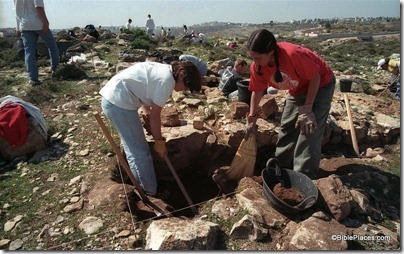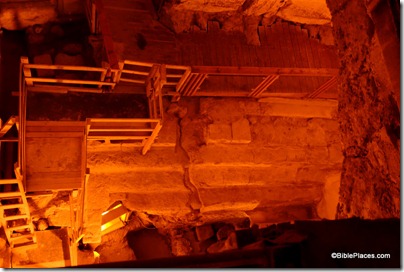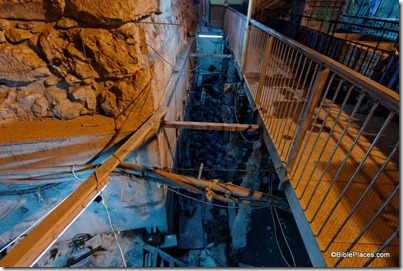A couple of new buildings in the Jewish Quarter provide good views from the rooftop or balcony.
Both cost but both provide unique perspectives that are worth the price of admission.
A one-hour tour of the Hurva Synagogue concludes on the balcony with views in all directions.
For 10 shekels, you can get access to the rooftop of Aish HaTorah and its unobstructed view of the Western Wall plaza and Temple Mount.
Aish HaTorah also has a model of the temple on display on the roof.
While on the rooftop a few weeks ago, I could see down into the area of the Temple Mount ramp that is otherwise blocked from public view by a fence. An archaeologist employed by the IAA was with a group of workers, leading me to wonder if any (quiet) progress is being made in the excavations there.








